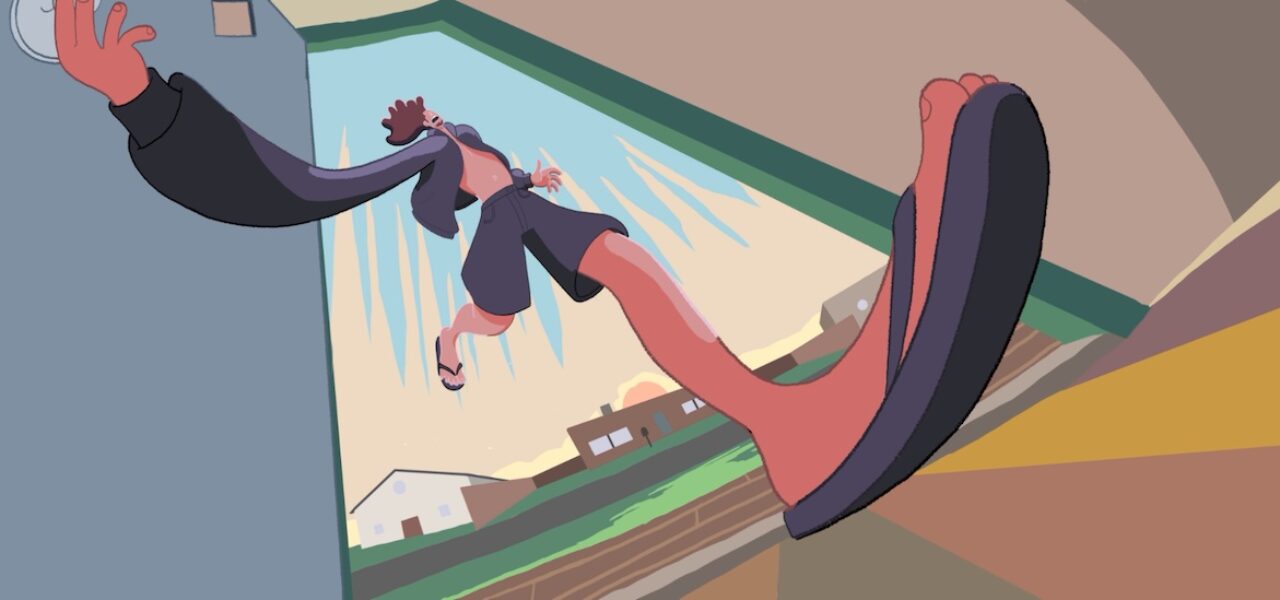
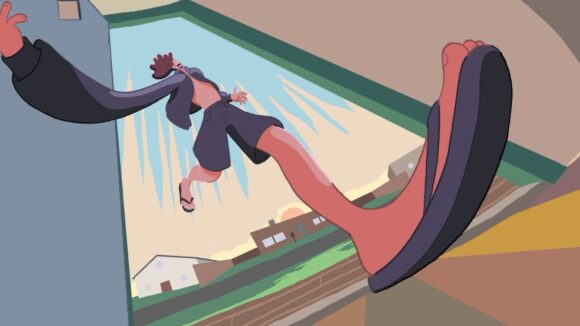
School Of Visual Arts Students Discuss How They Completed Their Thesis Films Remotely
As the School of Visual Arts returns to campus, animation students from the BFA Computer Art; MFA Computer Arts; and BFA Animation departments reflect on working remotely this past year.
The Class of 2021 graduates faced many new challenges, including completing their thesis projects remotely. The students discovered creative ways of collaborating with thesis partners and finding new tools to work on their films. We spoke to graduates and asked them about their experiences, and found that they discovered many great strategies for completing their thesis films from home.
BFA Computer Art
Recent alumni from the BFA Computer Art, Computer Animation, and Visual Effects departments had to find alternative ways of working on their projects, since they couldn’t work in person in the computer labs at SVA. This was a unique challenge, especially for groups working together, as well as those living outside the United States.
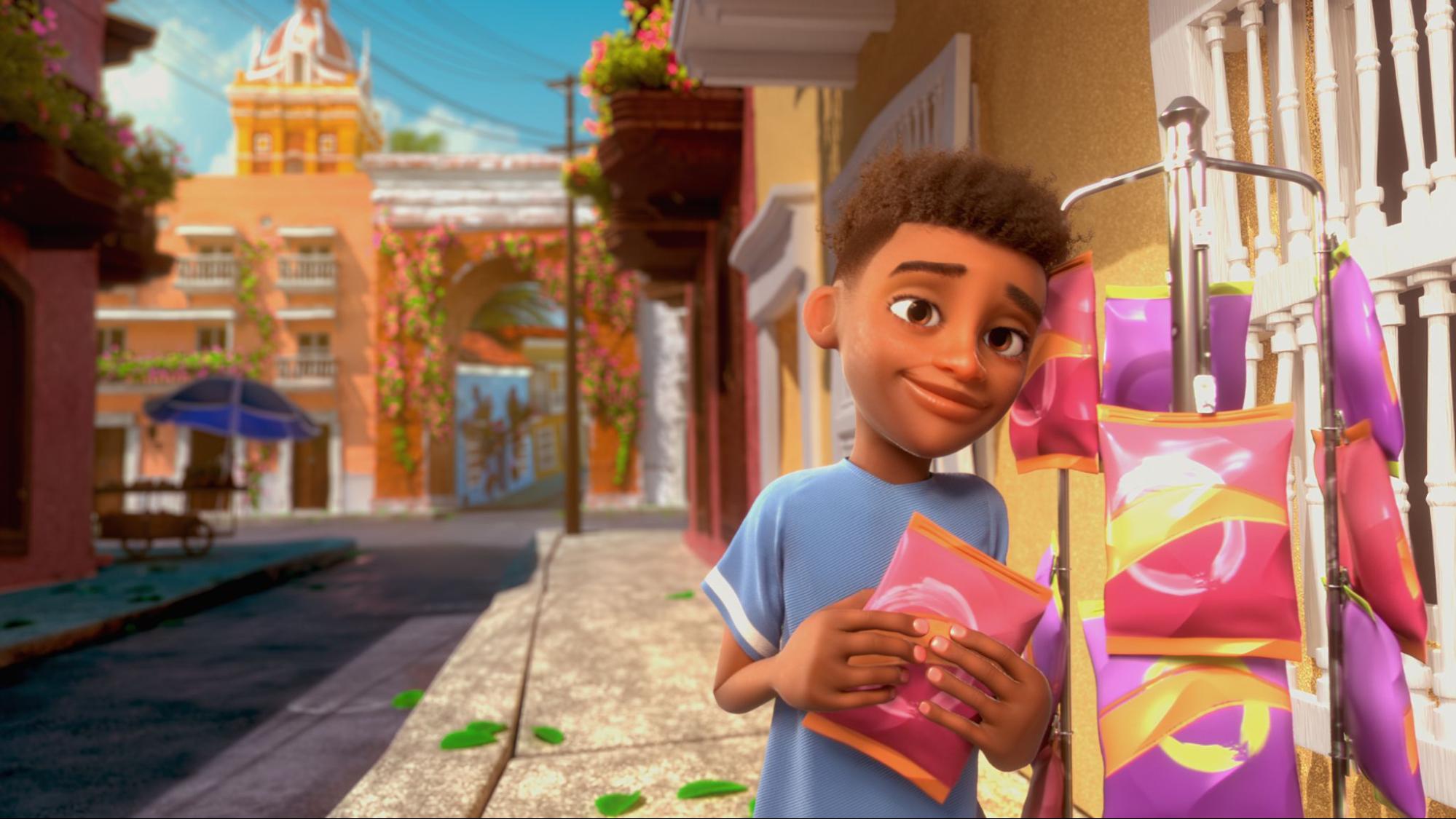
Cariño is a film by Roshel Amuruz, Carlos Taborda, and Ashley Williams. It tells the story of a young boy who embarks on an adventure to find a flower for his crush in the streets of Cartagena. Not being able to work together in person, the group devised new ways of collaborating remotely and keeping in touch. As Amuruz says, they recreated the SVA Computer Art freetime labs through Discord:
In some ways working remotely made us spend more time together as a team. We were constantly using platforms like Discord to chat — we realized that, for our team, what worked best was recreating the atmosphere of SVA’s labs online.
We would stay on the voice chat for most of the day, chatting and keeping each other company, but also asking each other’s opinions on our work, giving updates, and making creative decisions about the film that would come up throughout the day. Working remotely also saved us time that we would otherwise have spent commuting and allowed us to invest that time into our film.
The Cariño team used remote tools to manage their thesis project:
We discovered a lot of new ways of working that helped us work as efficiently as possible, like utilizing Prism as our pipeline tool, which organized all of our files and made it easy for us to locate the work each teammate was doing.
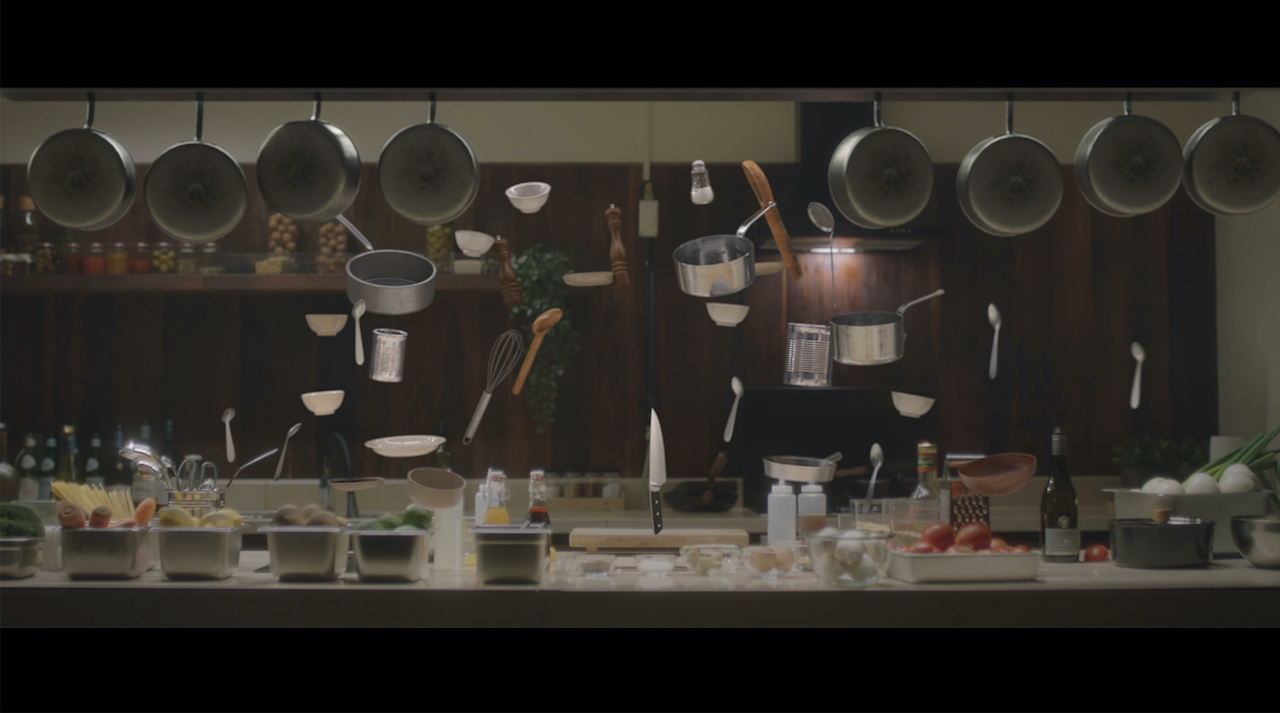
Bon Appetite by Seung Joon An, Jiwon Kang, and Minjae Kim is a film about an enchanted knife and kitchen tools that help a lonely chef recreate a dish his deceased wife used to make. Despite the challenges of not being able to work together in person, the Bon Appetite team recognized it was a useful experience, as remote work is becoming more popular in the animation industry:
It was difficult because it was our first time working fully remotely, but we believe remote work will become more active soon due to the pandemic. So we are optimistic about experiencing this kind of remote work situation in advance.
Working on Bon Appetite helped the students get a better idea of the roles and careers they are interested in pursuing in the vfx industry. They were able to immerse themselves in their individual roles, while also learning the vfx pipeline. Kim explains:
It was an excellent experience for us to dive into an entire pipeline of how vfx production works. From knowing the entire pipeline of vfx production, we learned how the camera takes certain shots and how the post-production workflow works. It was an inspiring experience to be on set with the team and direct the movie.
BFA Animation
BFA Animation spoke with filmmakers Kiana Caines and Elle Vaughn about their challenges producing their thesis films remotely, what inspired their individual stories, and how their experiences in the past year would help inform their first steps into the industry after graduation.
Kiana Caines’s film Lone is about a novice space explorer who gets stranded without her crew on an alien planet. She must survive as long as she can with her computer assistant, Atlas, as she waits for rescue.
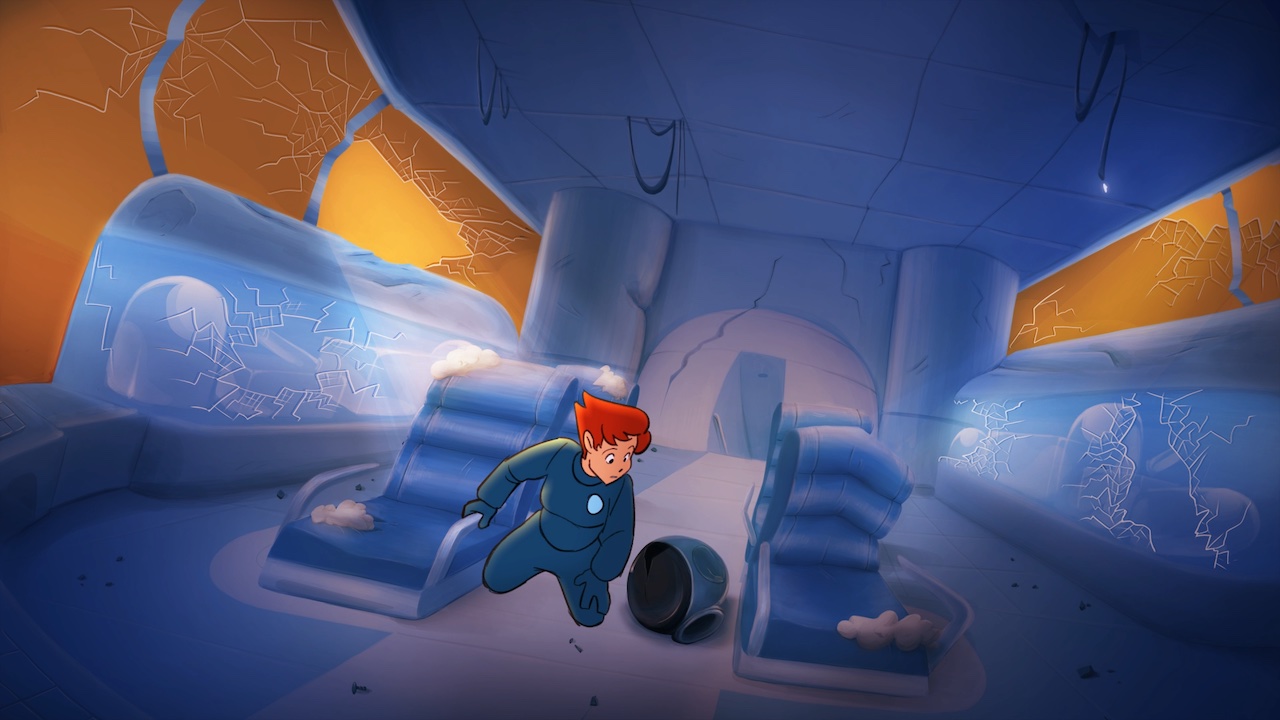
Caines shares what inspired the story of her thesis film and the experience of producing it remotely during this past academic year:
My film was a love letter to things I enjoy. I pulled from many inspirations, including Star Trek, Cowboy Bebop, and Josie and the Pussycats in Outer Space.
I didn’t want a happy ending for my film, and even more so with the pandemic that I needed to show in my film. It’s always a joy remembering that my film started as a sketchbook doodle from December 2019.
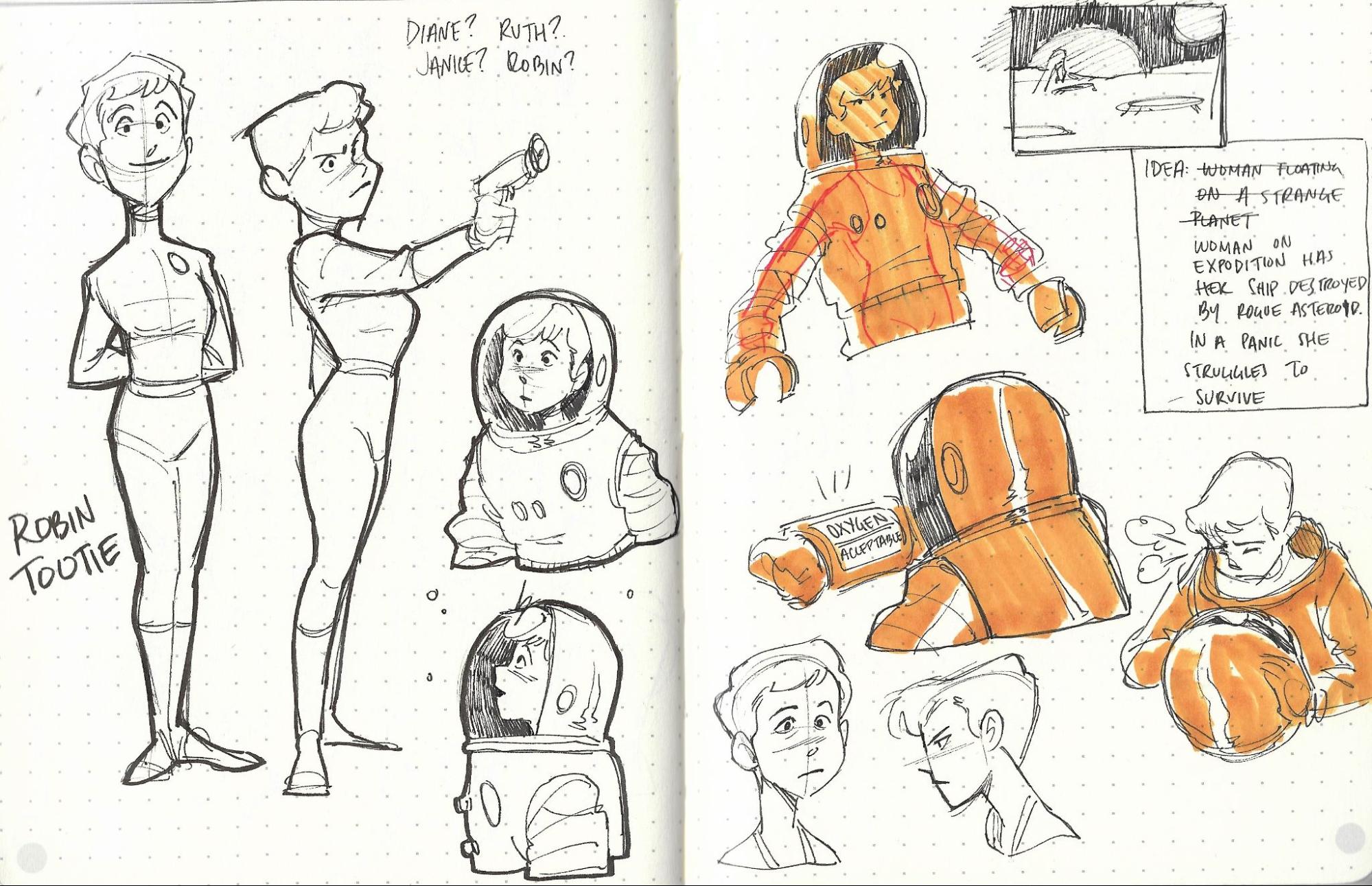
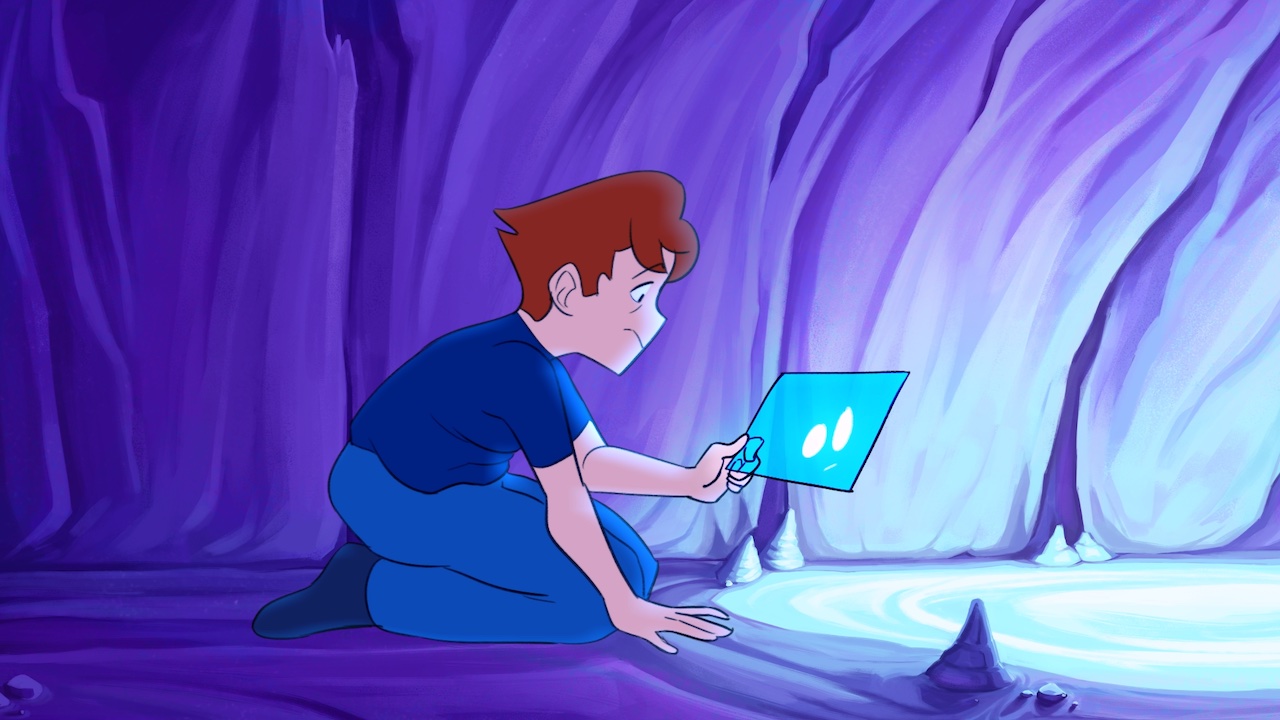
There was a stark difference between producing a film from home and in person at the department labs, but Caines found positive workflow habits and new ways to collaborate online:
Working with people remotely was nothing short of a positive experience. It was engaging working with peers from other animation programs in other schools like SCAD, CSUF, and the Academy of Art University. It was a networking opportunity like no other.”
When faced with the challenges of the pandemic, Caines was able to turn to creative support systems within SVA’s BFA Animation community:
Burnout was the biggest problem for me. Under the advice of my thesis advisor, Luz Batista, and my close friends, classmates, and professors, taking breaks and showing works in progress for feedback helped significantly.
Caines has been working predominantly freelance since graduation. She briefly worked as an intern for Augenblick on Teenage Euthanasia and has illustrated an album cover and produced a music video for musical artist Hobo Johnson and the Lovemakers.
Elle Vaughn’s film Waterworks centers on a guy who breaks into other people’s houses to bathe in their bathtubs. She shared the process of her filmmaking and how this idea came to fruition:
The inspiration for my film came around my first year at SVA, and my first time living away from home.
Whenever I’d take a shower in my dorm, I’d think about how it would probably be decades before I could ever afford to live in a place that had a nice bathtub all for myself.
The happy ending is important — as long as you have your basic needs accounted for, it’s possible to be happy wherever you may be.
During a thesis year spent remotely, Vaughn reflected on the difference between working remotely and onsite, sharing details of how she got through the remote filmmaking process:
The most useful thing I did for myself was to give myself “daily” work. I gently pushed myself not to do more than I planned each day — that way, I ended up maintaining a decent work/life balance over the course of the school year. Working under quarantine is already a little draining, so you may as well take care of yourself while you’re doing it!
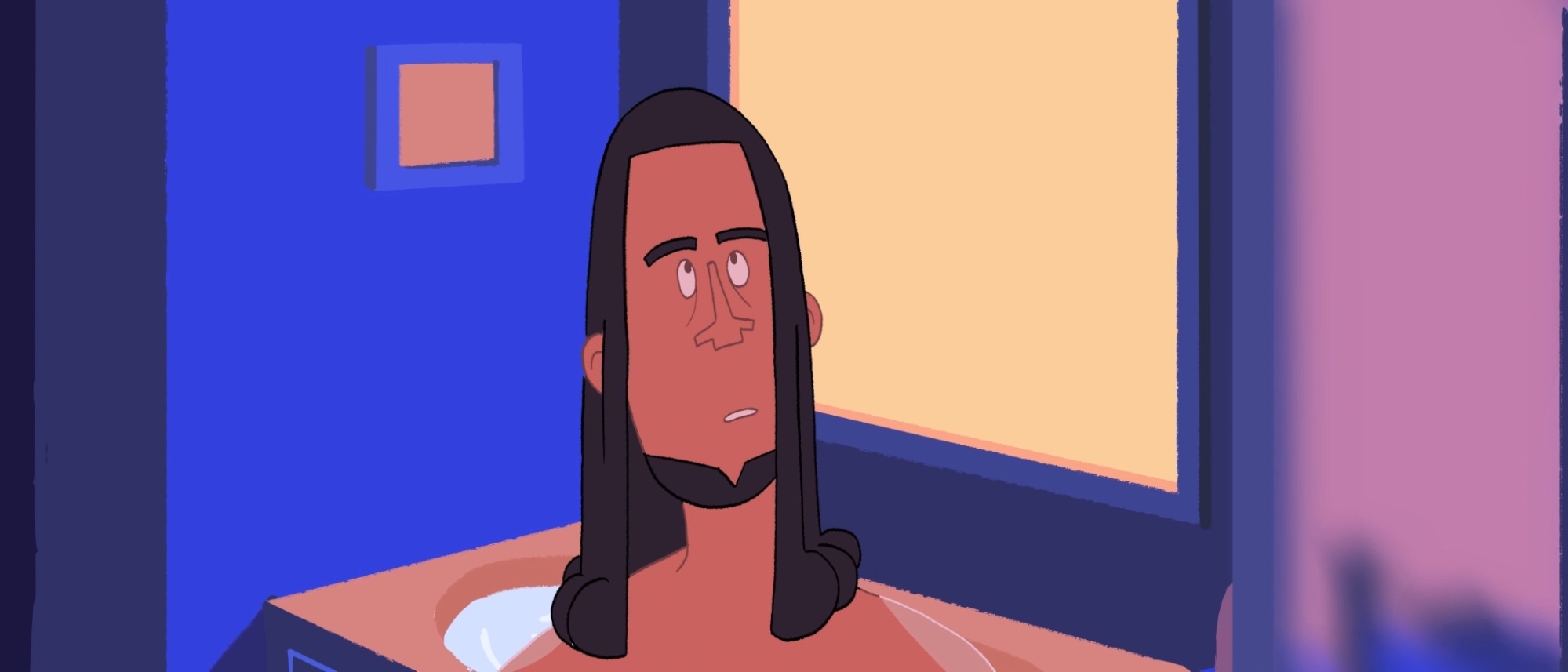
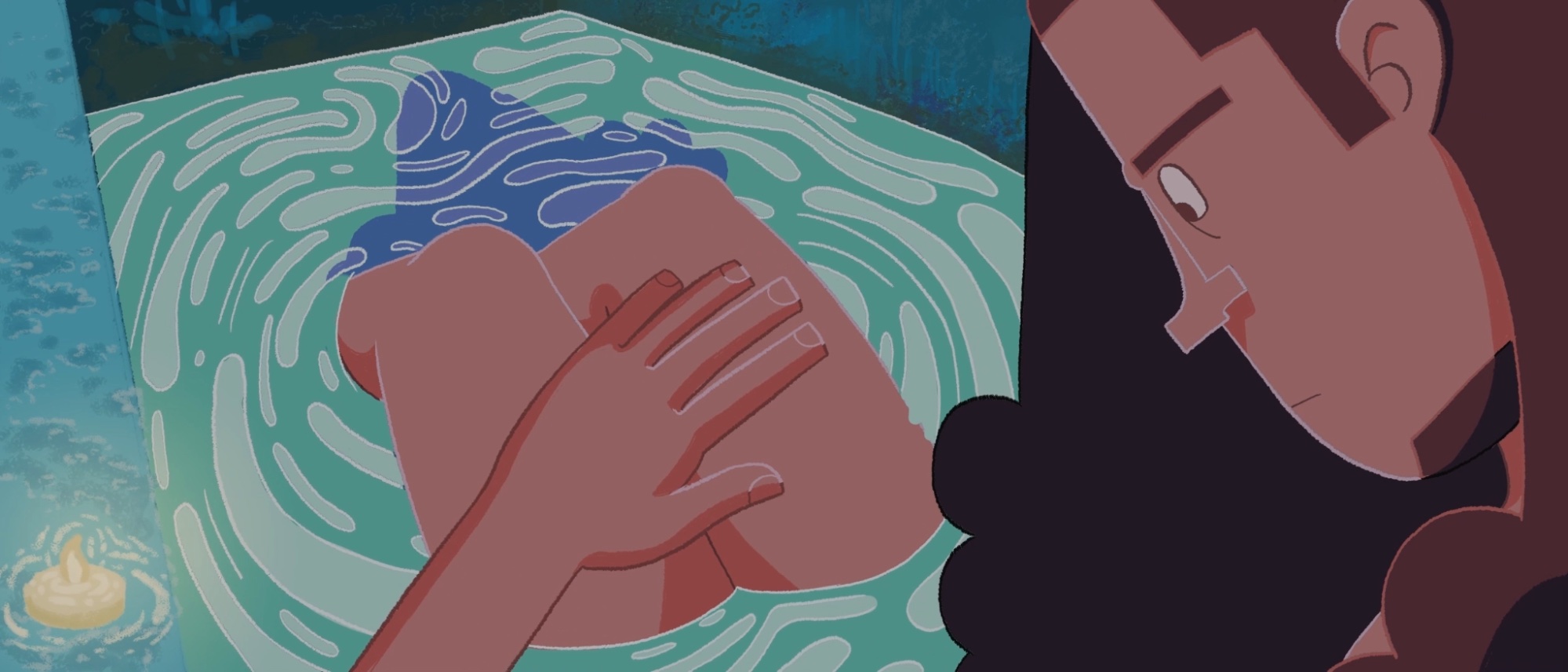
Having remote collaborators for my thesis set me up for a more realistic expectation of my future in the industry. I had artists from places as close as New York and as far as Brazil working on my thesis with me, and being able to organize a project over such long distances felt pretty incredible.
Vaughn remained in New York after graduation and is currently working as a production assistant at Hornet. She hopes to stay there indefinitely, and is very excited about the future.
MFA Computer Arts
MFA Computer Arts’ recent alumni Chloe Xiangyu Shi and Daiqi Cui talked more about their experiences making creative and innovative projects.
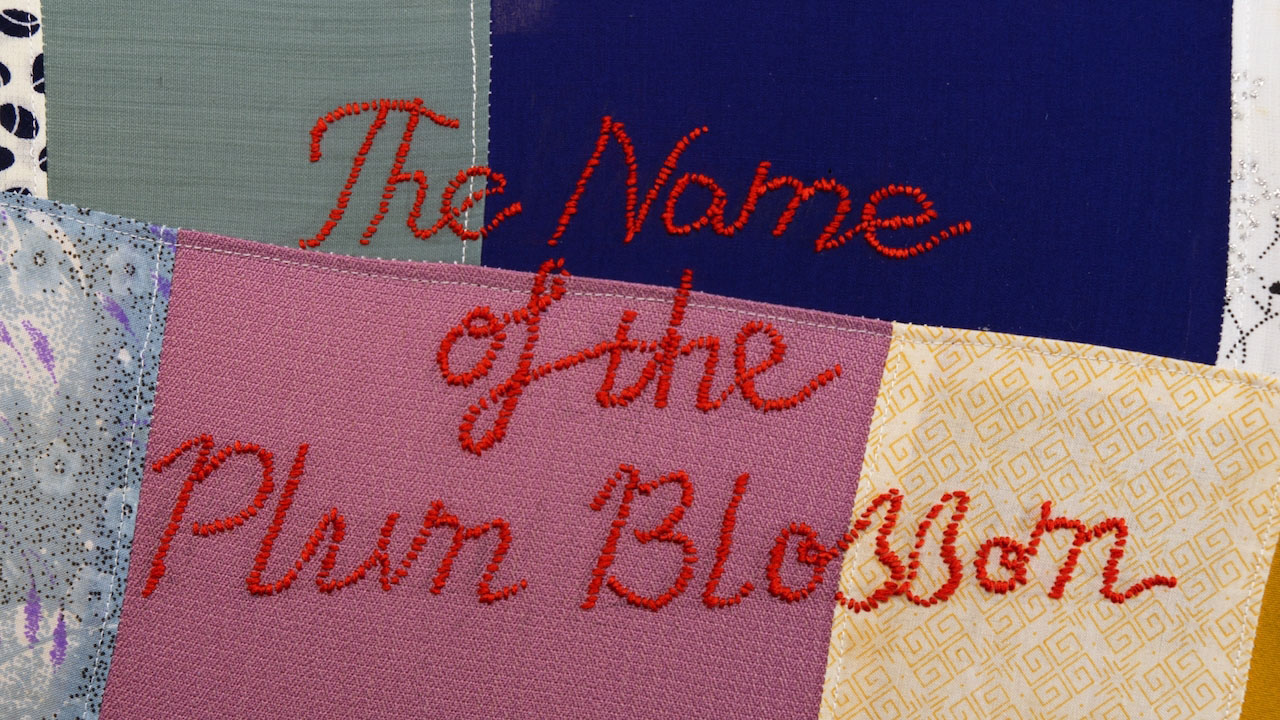
Chloe Xiangyu Shi’s animated project, The Name of the Plum Blossom, tells the story of her mother’s life as a tailor, with fragments of history and philosophical inquiry. Directly speaking about her film, Chloe says:
My thesis is a story about my mom as a tailor. Since I was in my home country China, I could collaborate with my mom, and she helped me with some stitching shots. I stayed with my mom since I left home for almost seven years. My thesis’s title was inspired by a novel, The Name of the Rose, written by the famous Italian writer Umberto Eco.
One of the most exciting things about Shi’s film is the unexpected use of materials and tools, as seen in the image above. She uses many different techniques, such as cut paper, string, and collage. She discusses her experience with the animation process:
Before my thesis animation, I’ve only had one experience shooting stop-motion animation. During the thesis project, I learned how to set up lighting and cameras in the process. I will definitely keep shooting stop-motion animation in the future.
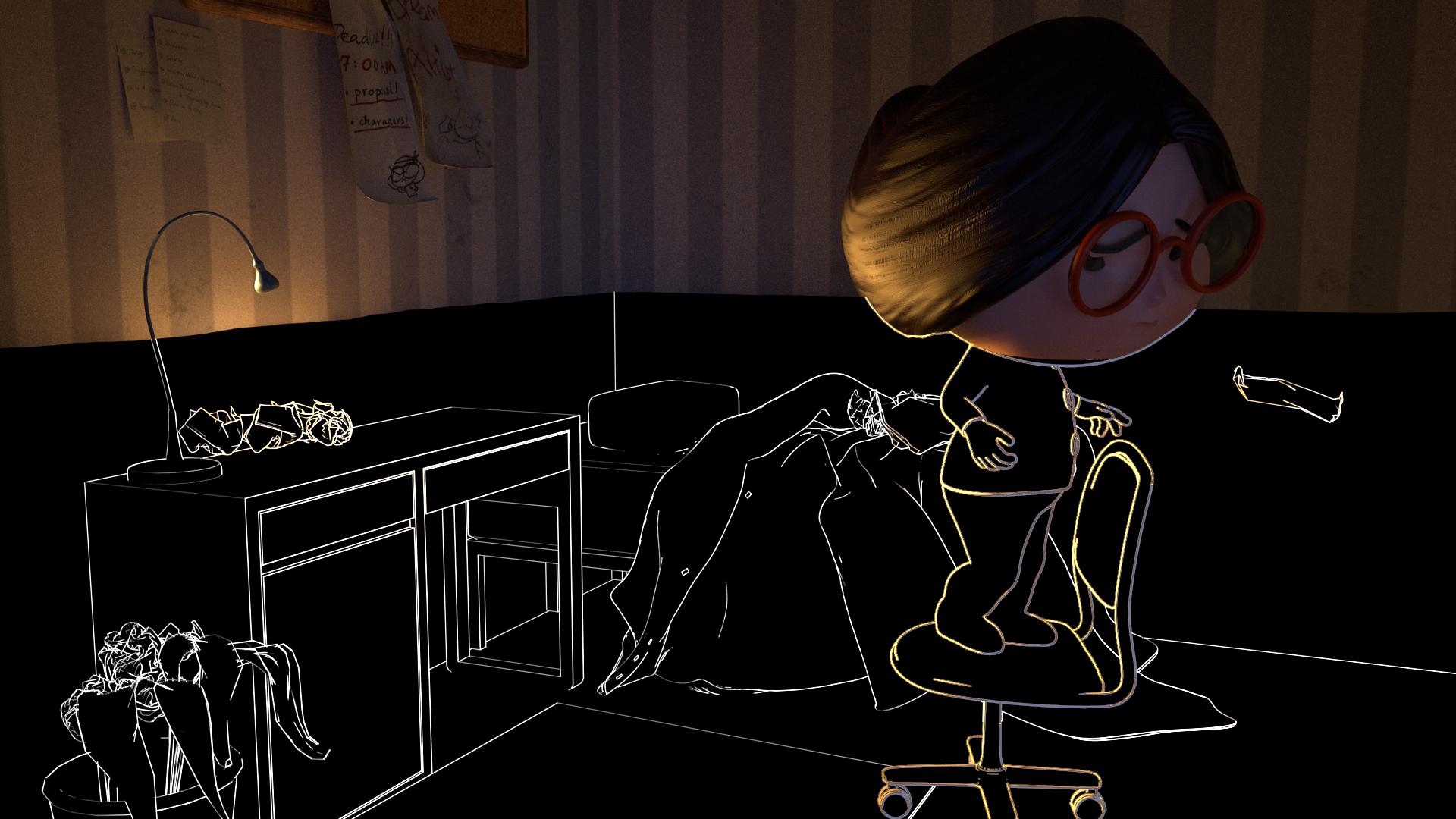
Daiqi Cui’s thesis project, PANIK! (Torschlusspanik), is an interactive 3d experience illustrating the emotional landscape of being an artist. It is quite literally about the German word torschlusspanik, which denotes the fear that time is running out to act. While there were numerous challenges to the thesis process, there was often a silver lining. Cui writes of her experience:
It was actually very helpful for me to focus on my thesis and avoid distractions. No time wasted on commuting, no excuse to procrastinate, and there was more time for self-exploration. I realized that self-forgiveness is not an excuse to make myself weak, but a guard to protect myself from being crushed by stress.
When I was stuck in my thesis, I tried to do something else: cooking, watering plants, drawing, gaming. Some of them I do all the time, some others I just tried out and they distracted me from the anxiety. After relaxing a few moments, I could be more efficient and finally I accomplished my thesis.
There were plenty of challenges as well:
I had tons of unexpected problems, from technical difficulties to time arrangements. My thesis is an interactive project that combines 2d and 3d. That means that I have to do multiple things simultaneously. I found the best solution was delegating work to all available systems and resources. For example, drawing while the farm renders, or setting up different particle systems while another PC (thanks a lot to our department’s remote PC and render farm) is simulating smoke, modeling, shading before I could get to the animation part.
In spite of the many challenges while working remotely this past year, SVA’s animation students created some incredible work. Watch the thesis films by BFA Computer Art here, by BFA Animation here (see a complete list of SVA’s Class of 2021 graduates on the school’s Animation Portfolio Talent Directory), and by MFA Computer Arts here.
For more information about the School of Visual Arts, check out its website.
